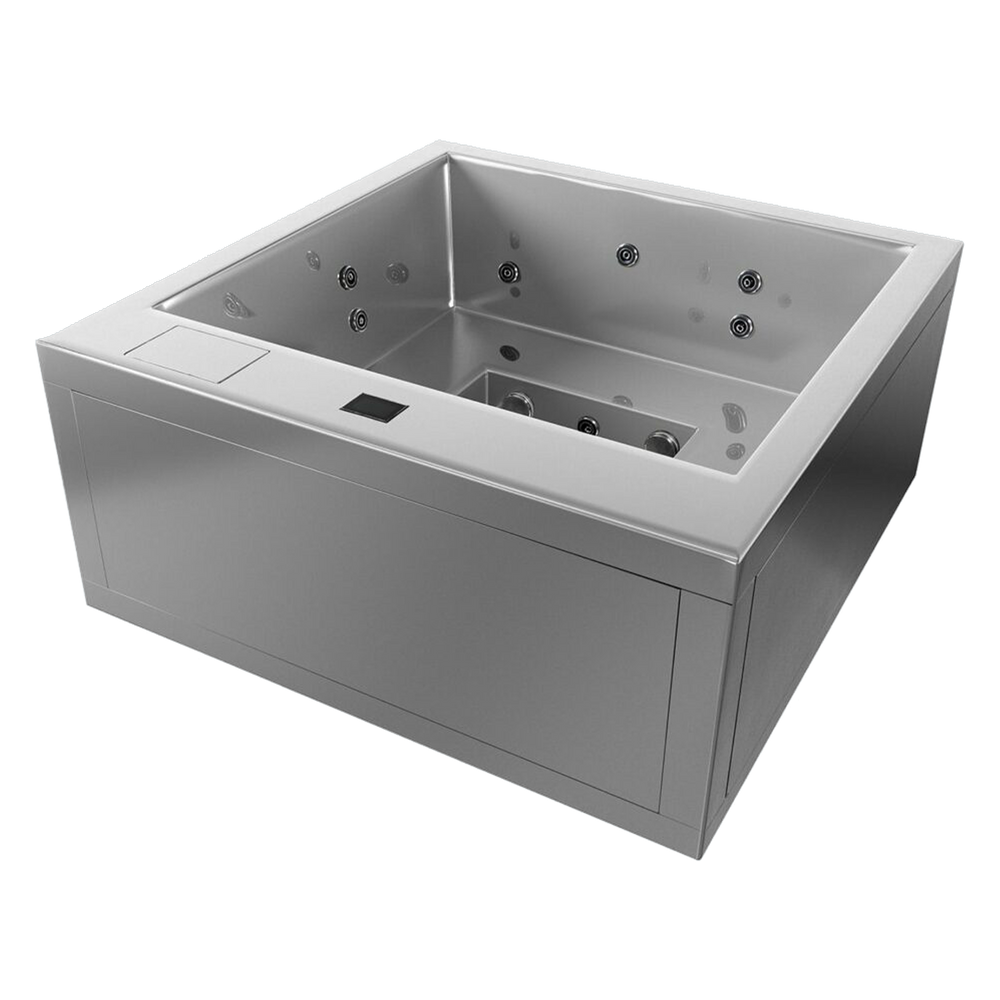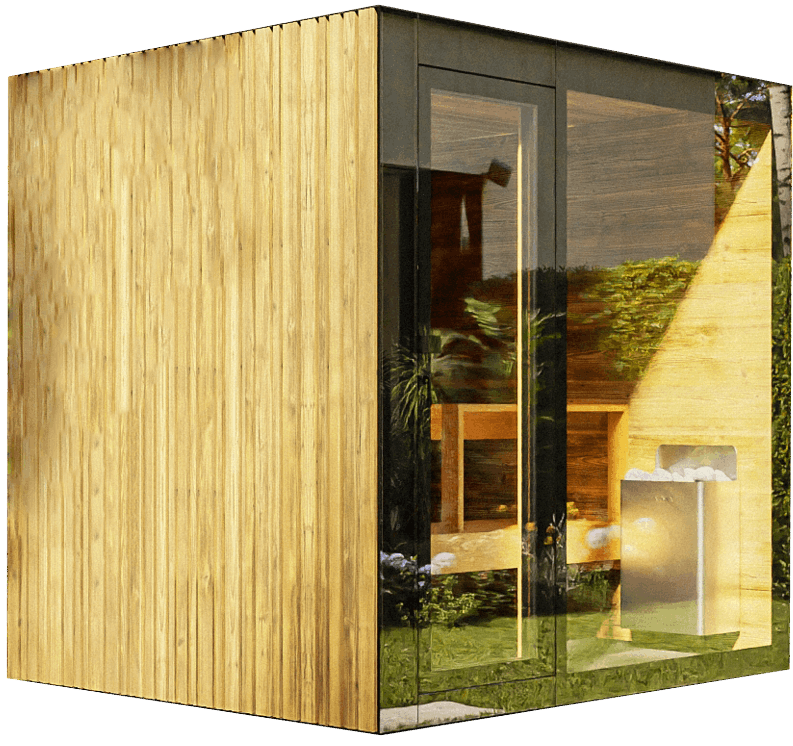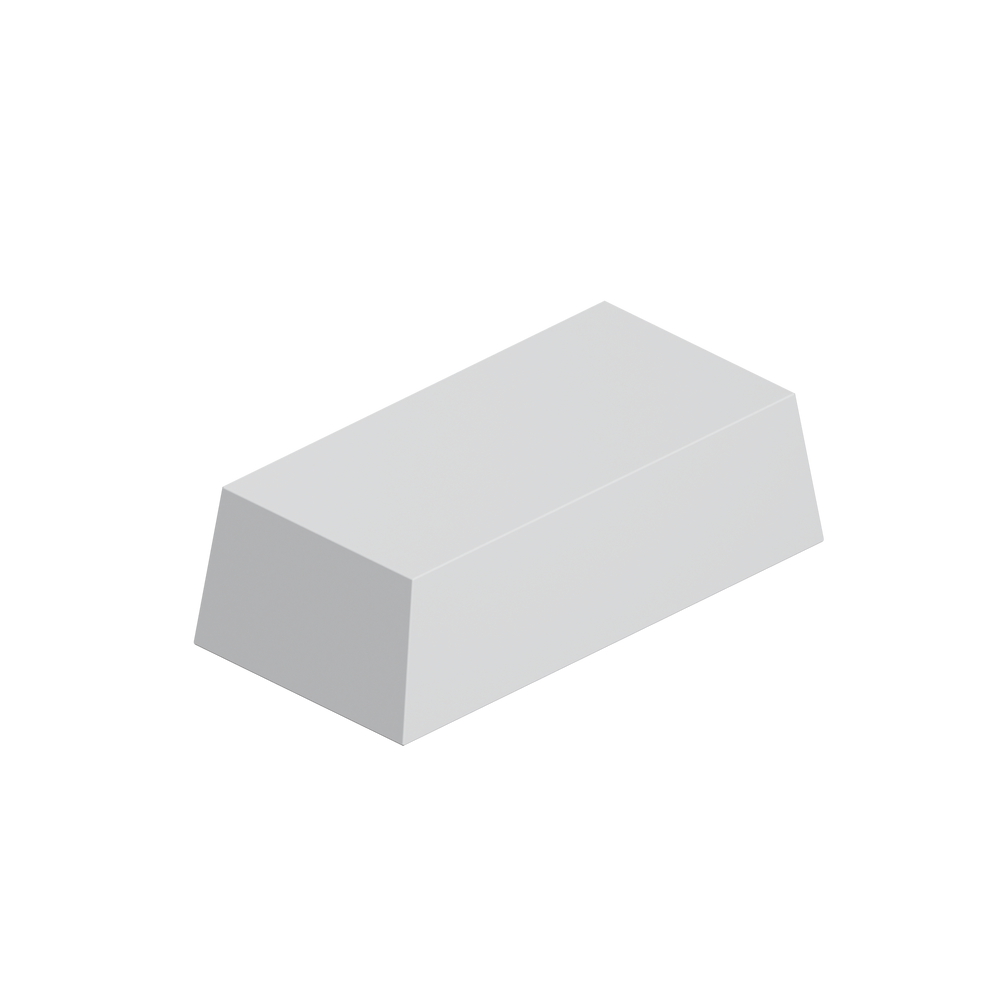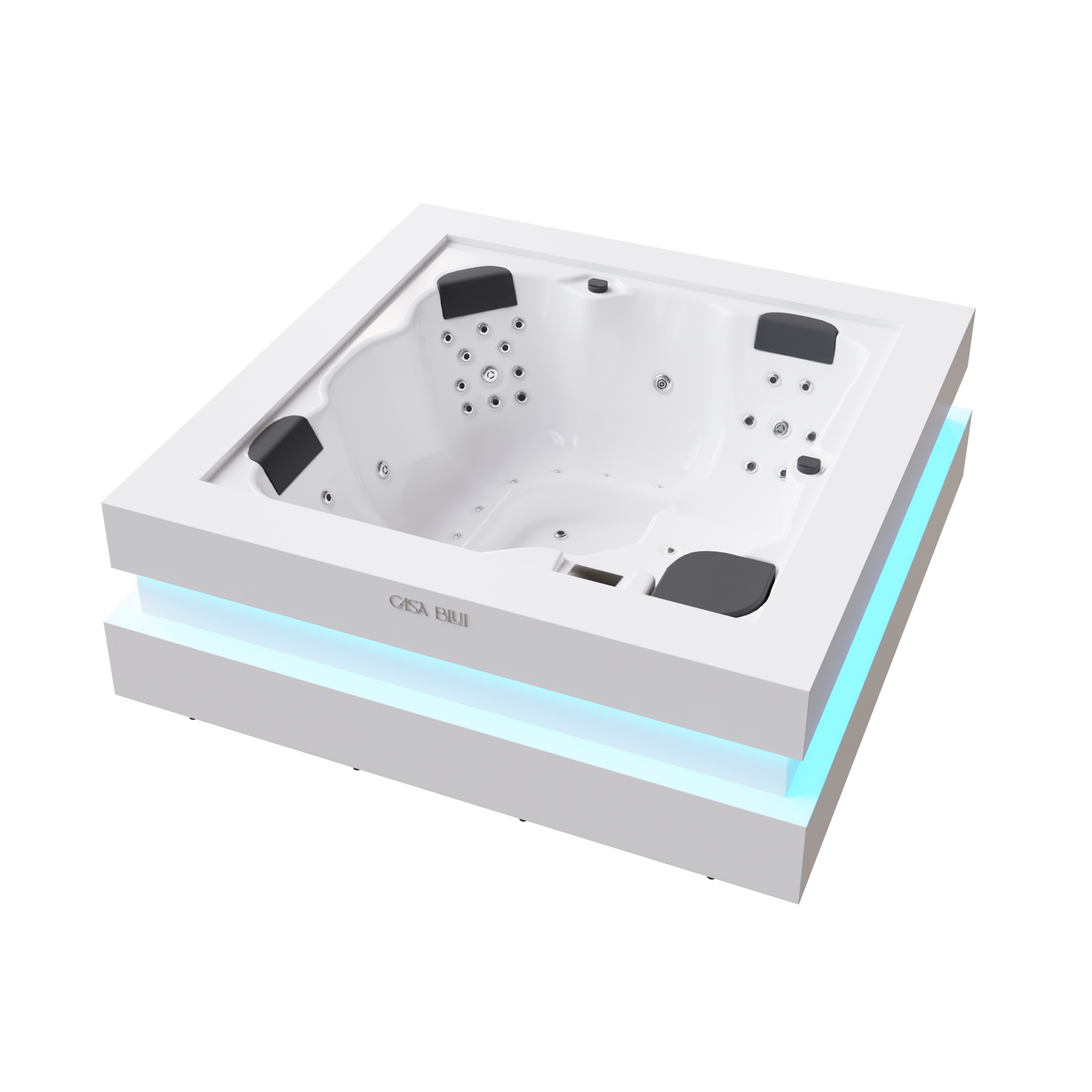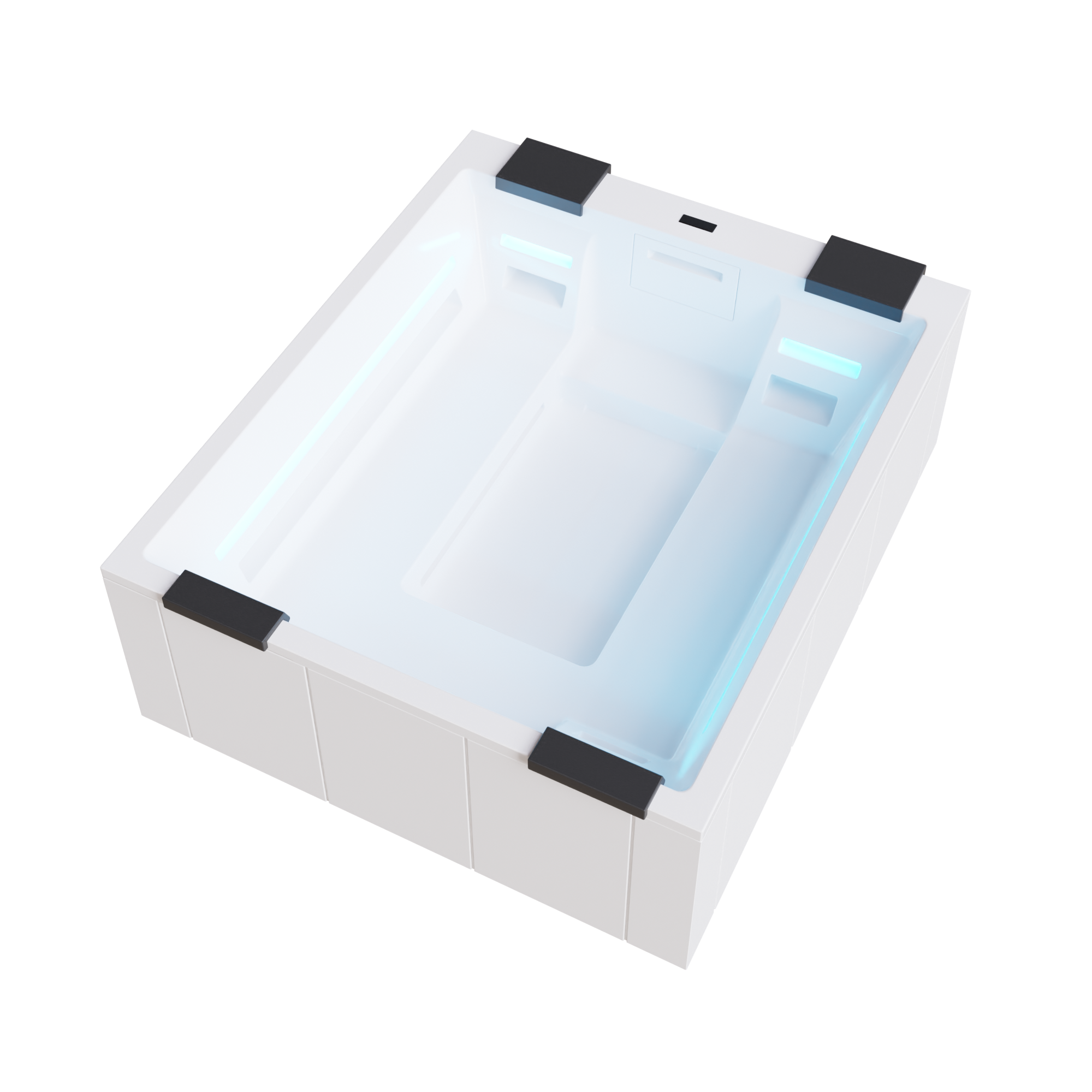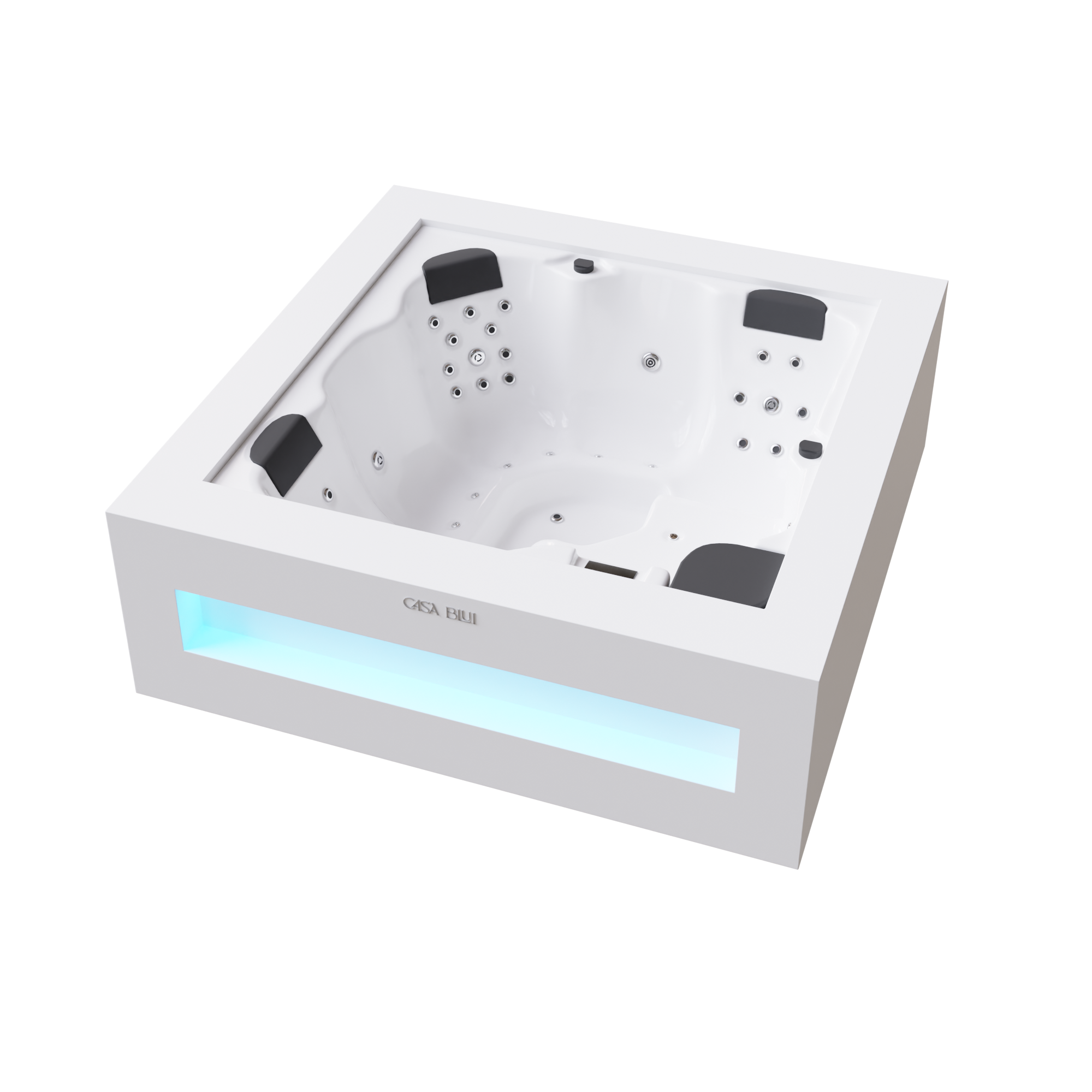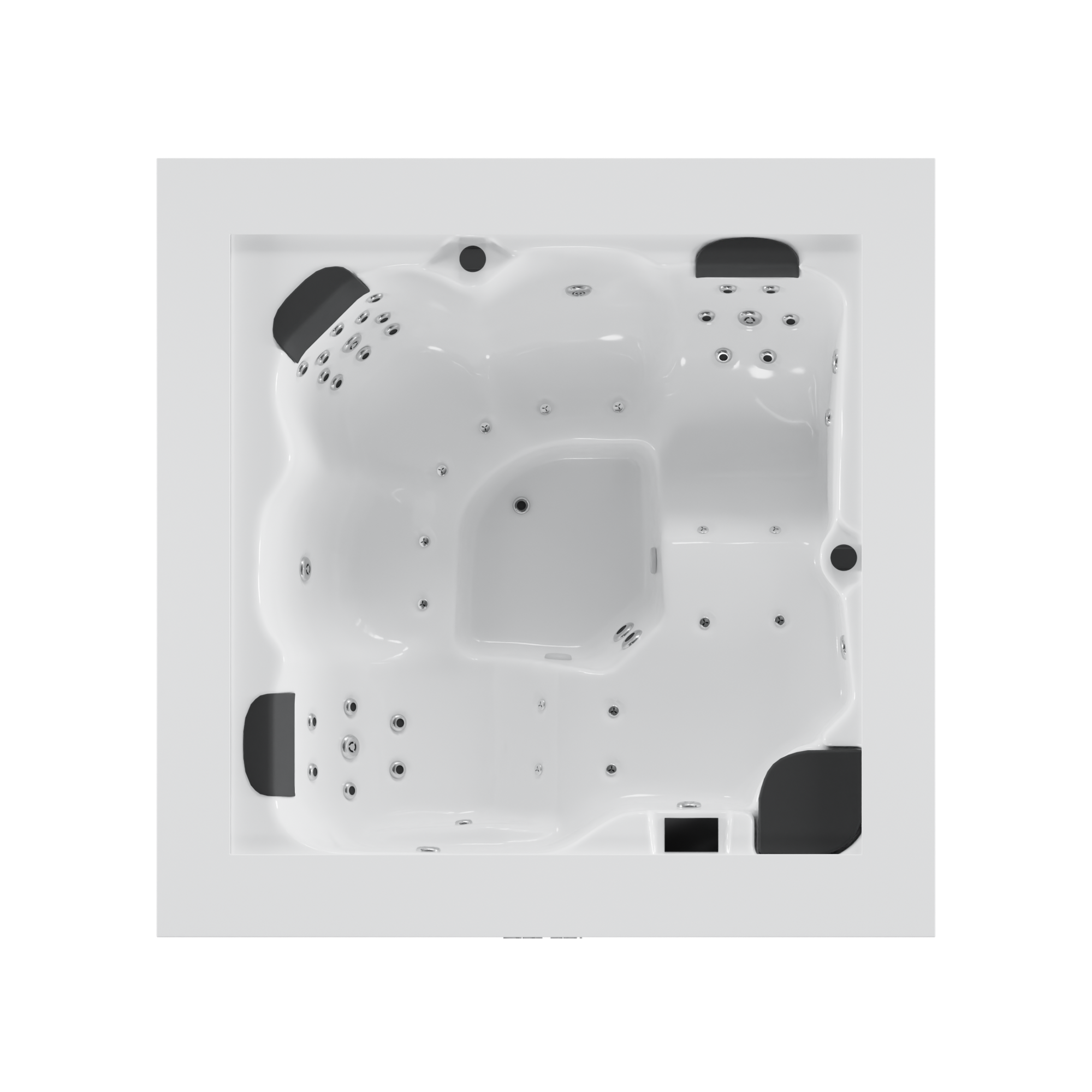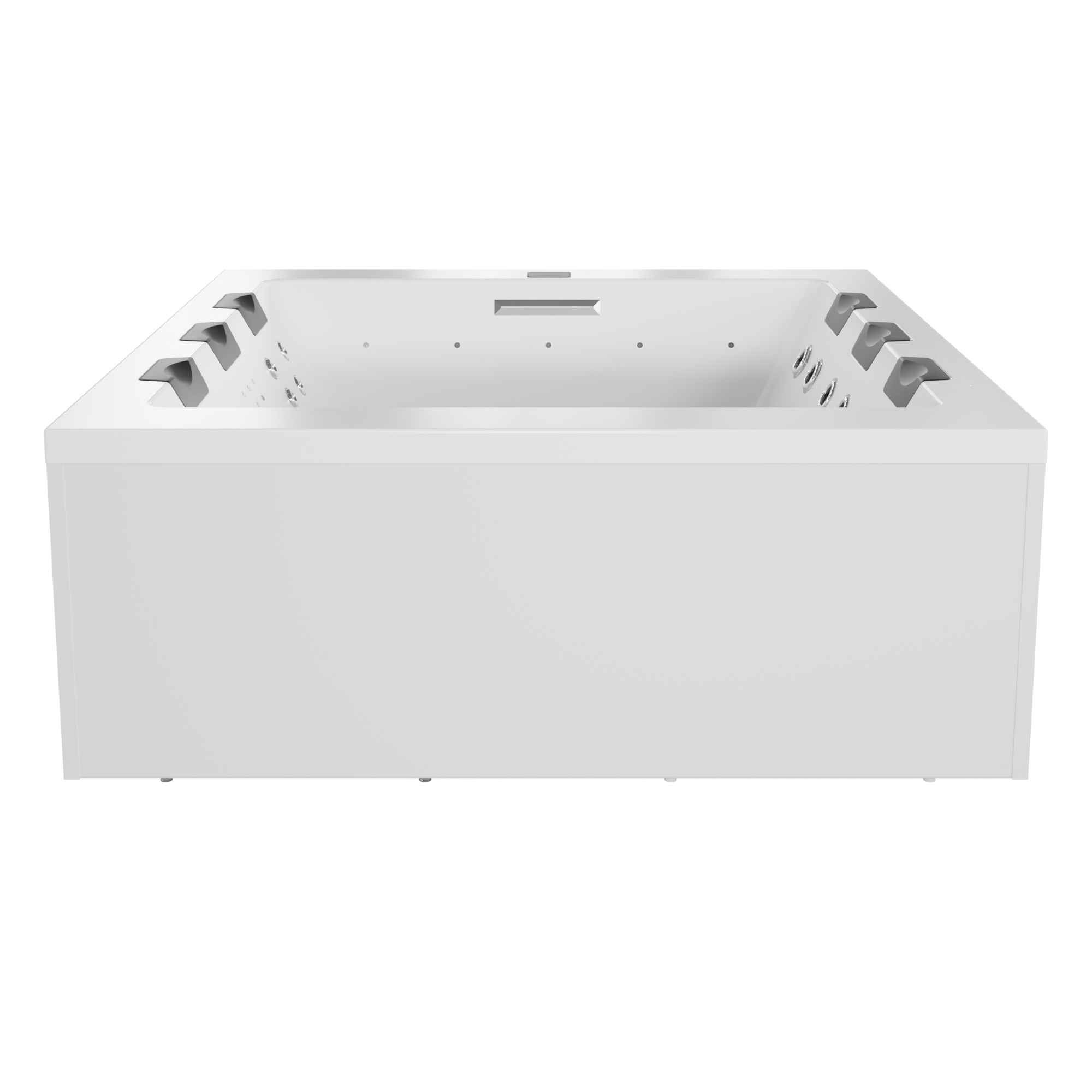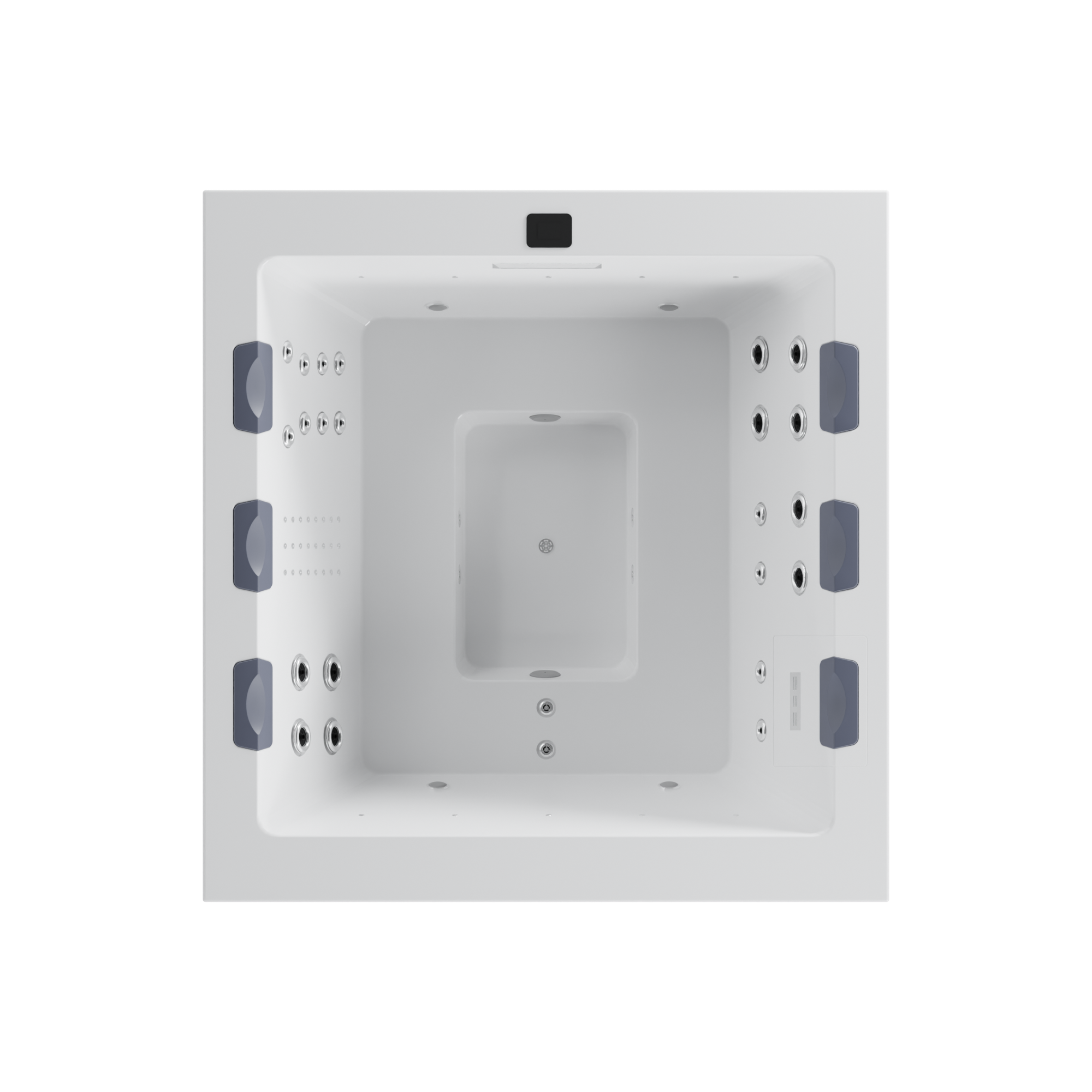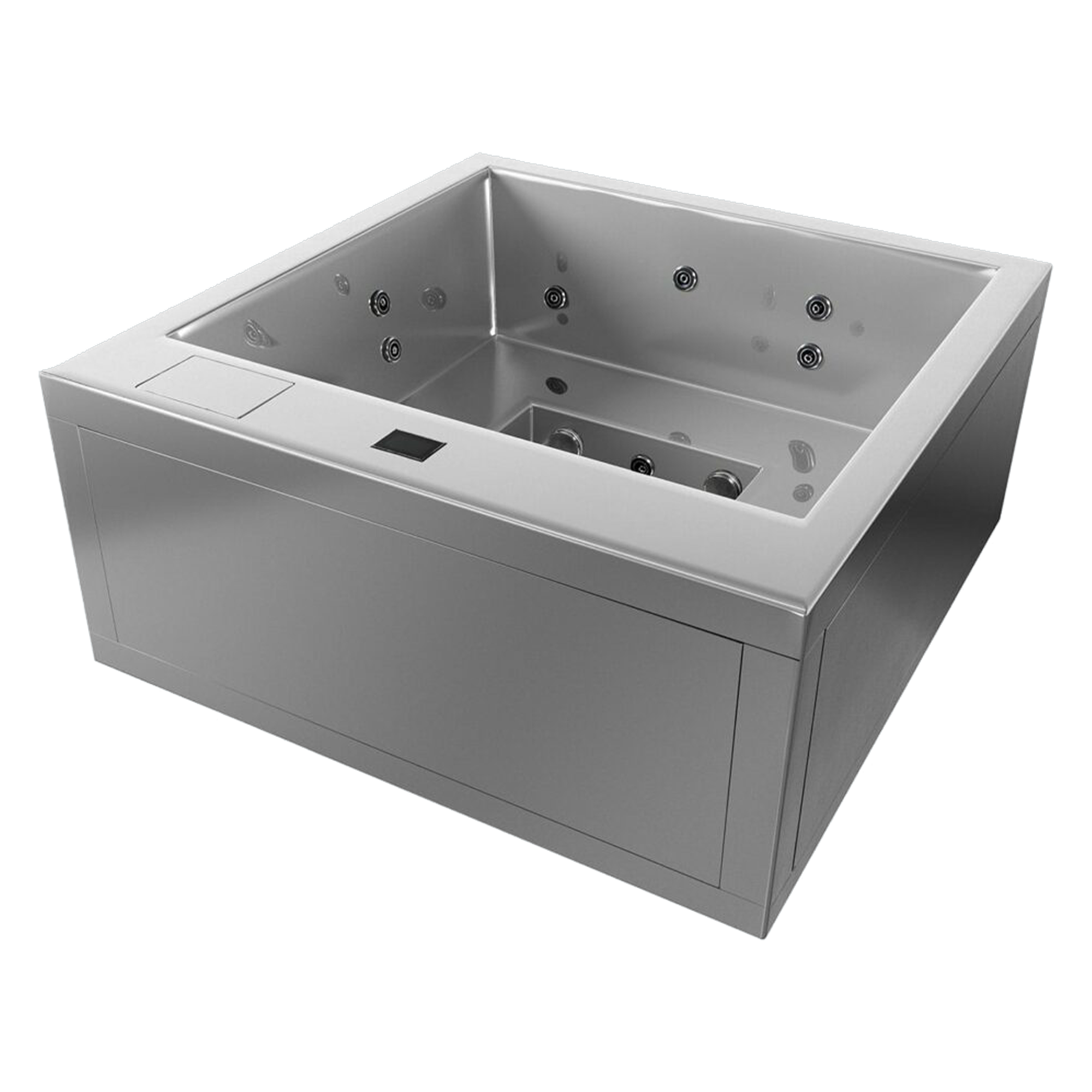Casa Blui Blog
Hot Tub Sizes and Seating Guide
By andrei newman
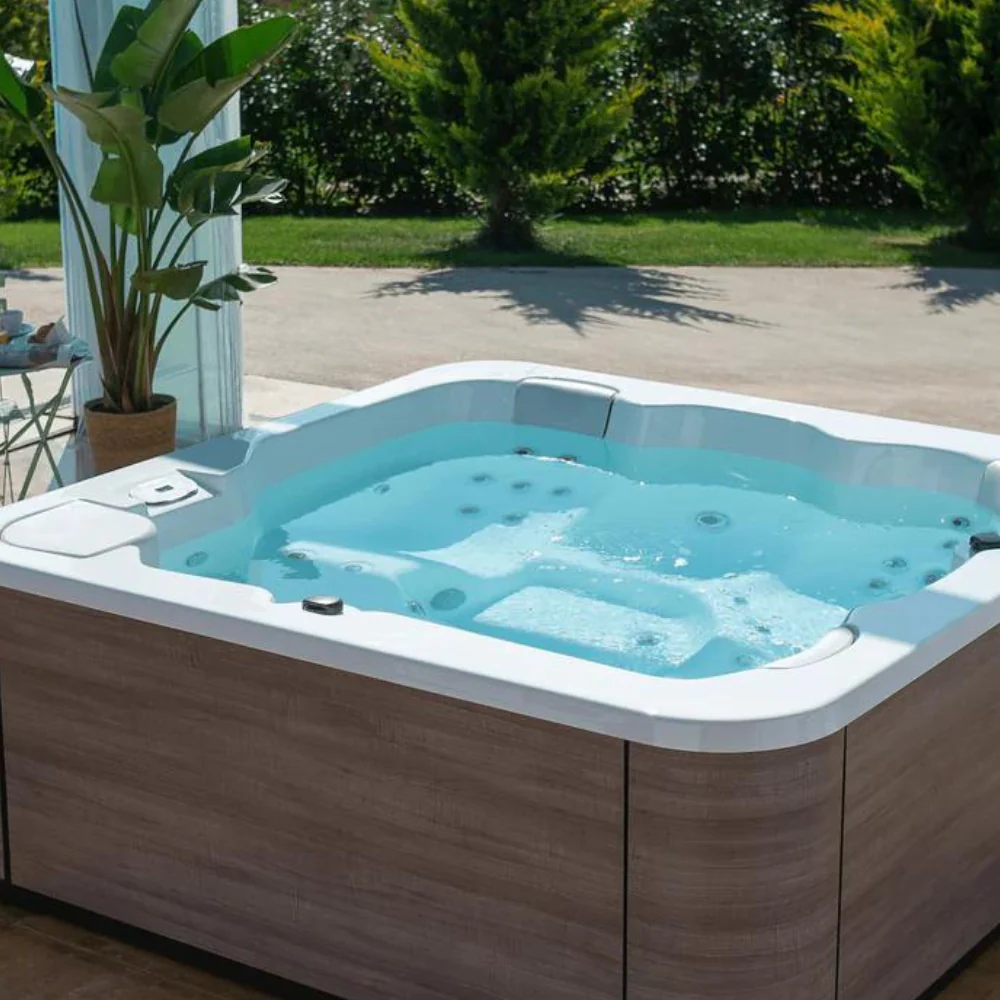
A hot tub is more than just a luxury item—it's a sanctuary, a place to unwind and relax. That's why it's crucial to get the dimensions right. But there's a wide range of sizes, from small cozy tubs to large designer spas, and these different dimensions potentially impact your comfort and relaxation.
Before you invest in a luxurious spa tub, it's essential to research how big, wide, deep, or heavy the product can be. This will help determine whether a small, medium, or large hot tub fits your needs.
Introduction to Hot Tub Sizing
It's exciting to purchase a hot tub. However, it's vital to understand the key factors influencing your choice; size is one of the most important. It directly impacts your hot tub's space, cost, and configuration, shaping your overall experience.
Below is a chart with standard hot tub sizes and their respective space requirements, from small to large spas:
|
Hot Tub Size |
Space Requirement
|
|---|---|
|
Small Hot Tub (2-3 person capacity) |
5’ x 5’ to 5’8” x 7’ |
|
Medium Hot Tub (4-6 person capacity) |
6’8” x 6’8” to 7’9” x 7’9” |
|
Large Hot Tub (7-8 person capacity) |
7’ x 7’ to 9” x 7’9” |
The average hot tub size for a backyard is usually between 6–8 feet wide and 7–8 feet long, seating anywhere from 5–6 people comfortably. It's also important to consider your preferred height for your hot tub. The depth or height of the tub will ideally allow you and your guests to sit comfortably with the water reaching about shoulder height.
Small Hot Tubs
When looking at compact hot tubs for small spaces or intimate usage, you want to consider a few attributes, including the size and space requirements. Small hot tub dimensions typically range in width from 5 feet to 7 feet. They can accommodate between 2 and 4 guests. They are perfect for couples or creating a cozy nook in your garden.
Small hot tubs come packed with features that make them worth considering. They combine function with convenience, are perfect for indoor spaces, and can easily be incorporated into small patios or deck corners. Take time to measure and plan the deck or yard area, considering the hot tub and the space around it for maintenance, accessories, a patio fire pit, and any hot tub safety features for children in the home.
Additionally, smaller hot tubs are more energy-efficient than larger models, which may be attractive if energy conservation is a priority. For further energy-saving benefits, you can add specific features, like high-quality insulation or energy-efficient heating systems.
Medium Hot Tubs
If you love to host or have more space to spare, medium hot tubs provide an excellent blend of functionality and design. They can seat 4 to 6 individuals, ensuring a balance between space and intimacy and a good balance between communal and private soaking spots.
Nestled between small and large options, medium hot tubs' versatility is their main selling point. They offer a variety of shapes and can blend seamlessly into your designated indoor or outdoor space, making them a go-to option.
Remember that medium-sized hot tubs hold more water than small ones, up to 400 gallons, depending on the model. As always, consider the spatial balance of your outdoor or indoor area, your hot tub capacity option, and the water volume for the spa. Planning for a medium-sized tub requires more attention to accommodating its size and the increase in potential water usage.
Large Hot Tubs
While large hot tubs require more space and use more water, they also provide an impressive focal point for your outdoor space. A large hot tub can accommodate seven or more guests, making it ideal for hosting families or simply for those who wish to enjoy a spacious soak.
More oversized hot tubs often come with more elaborate seating options, offering a range of experiences within one tub. From rejuvenating hydrotherapy stations to comfortable lounging spots, they are the epitome of versatility and luxury.
Calculate the expected water volume (500 gallons or more) and energy needed to heat and maintain the large tub. You'll also have to leave enough space around your hot tub for easy access, maintenance, and other necessary yard activities. Large hot tubs may demand a greater deck area, structural support considerations, and even special arrangements for installation.
Swim Spas
Consider a swim spa if custom hot tub dimensions and the option to mix fitness with relaxation sounds appealing. A swim spa offers fitness enthusiasts the perfect blend of workout and relaxation. Its size is unique: it is designed to fit in most standard backyards but provides enough space for exercise. Swim spas are not restricted to weather and are perfect for year-round use. Even in colder weather, taking a plunge and relaxing is convenient.
Different Hot Tub Shapes
Different hot tub shapes have unique pros and cons, particularly in how they utilize space and influence seating capacity. The correct shape for you will depend on your preferences and how you plan to use your home spa, whether for intimate hydrotherapy sessions or social gatherings.
Circular Hot Tubs
Circular hot tubs facilitate conversation, with everyone seated in a circle facing toward the center. This shape can fit well into various landscape designs and smaller or uniquely shaped outdoor areas. On the downside, they typically offer less seating capacity than square or rectangular tubs of comparable size. They can provide less individual space per user.
Square Hot Tubs
Square hot tubs often offer a more symmetrical design, making integrating them into deck or patio layouts easier. They generally provide ample space for multiple users, with seating arranged along each side to maximize capacity. However, they can require more space overall, which might be better for smaller areas. The corners can sometimes offer less comfort compared to curved seating.
Rectangular Hot Tubs
Rectangular hot tubs may not provide the intimate, social atmosphere that round tubs offer, with people seated in a line rather than facing each other. But they're excellent for narrow spaces or alongside the wall of a house, making them space-efficient in elongated areas. They are ideal if you're looking to perform aquatic exercises.
Corner Hot Tubs
Corner hot tubs are space-savers that fit snugly into corner spaces, making them ideal for smaller decks and patios. Their unique shape can add aesthetic appeal and a sense of luxury. However, these hot tubs usually have limited seating capacity, which might not be suitable for larger families or groups looking to use the tub simultaneously.
Choosing the Right Size Hot Tub
When selecting the perfect hot tub, finding the right balance of size, space requirements, and seating arrangements is crucial. Here are some factors to consider.
Available Space
Your available space dictates the feasible hot tub shape and size. Circular, rectangular, or other specialty custom hot tub dimensions require different spaces. Remember to leave a few feet on each side of the hot tub to make maintenance easier when planning your outdoor hot tub size or indoor spa size considerations. This provides enough room to drain the hot tub and offers plenty of space for maintenance and repairs.
Number of Users
Consider your personal relaxation needs and the number of people likely to use the hot tub together. While hot tub capacity options are numerous, aligning them with individual requirements and the space available will narrow your choices. There are compact hot tubs for small spaces, perfect for couples or smaller families looking for a cozy ambiance. Suppose you have more room or a large family. In that case, family-sized hot tubs offer spaciousness and more seating arrangements.
Installation Requirements
Hot tubs need a firm, flat surface with close water and electrical supply access. They are also heavy and require a sturdy foundation. An empty hot tub can weigh 500 to 1,000 pounds, while a filled hot tub can weigh as much as 6,000 pounds. When choosing a hot tub, it's essential to ensure that your deck, patio, or yard has enough structural support to hold the weight of the hot tub and the people in it. Your hot tub dealer can point you in the right direction when it comes to getting your hot tub installed.
Energy Usage
Remember, the larger the hot tub, the more energy it will require to run and keep the water heated. Popular upgrades like adjustable jets, lighting, and sound systems will likely enhance your user experience but could also significantly contribute to your energy bill. As a general rule of thumb, more extensive options have higher operating costs.
Maintenance Tips for Different Sizes
Whether you own a compact spa for small spaces or a luxurious family-sized hot tub, these tips can help you ensure the longevity and performance of your investment.
Small Hot Tubs
Small tubs require fewer maintenance resources, such as lower quantities of the necessary water-balancing chemicals. However, you will still need to regularly clean the hot tub jets to prevent clogging from various impurities. Since the heating system is designed for a small water volume, any build-up on the heater can decrease its efficiency rapidly.
Medium Hot Tubs
Maintenance for medium hot tubs includes regular water chemistry checks, cleaning, and ensuring the seating arrangements stay in good shape. Additionally, regularly check the condition of the hot tub cover as it plays a significant role in heat retention and energy efficiency.
Large Hot Tubs
The measurements of large hot tubs, including the water volume, play a substantial role in determining the cost of running the hot tub. Maintaining a balanced water chemistry is even more critical in large hot tubs since the large water volume means that any imbalance in the water chemistry can lead to a significant problem.
Ensure the circulation and filtration system is functioning correctly, as the increased water volume requires efficient circulation to keep the water pristine. Review all the seating arrangements and features like hydrotherapy jets regularly, as issues are more likely to arise due to the increased usage.
Frequently Asked Questions
What sizes do hot tubs come in?
Hot tubs typically come in several standard sizes, including 78 inches by 78 inches, 84 by 84 inches, and 94 by 94 inches if you're looking at square hot tubs. However, different shapes are available, and the depth or height of the spa can vary according to the model.
How much electricity does a 4-person hot tub use?
As for electricity costs, most modern hot tub manufacturers claim their products cost about one dollar per day. At the higher end of the average, this can amount to around $50 per month.
How big is a 6-person hot tub?
Six-person hot tubs are usually slightly rectangular or square, with 3-person seats on each side. Standard hot tub dimensions of this size are generally either 6'8” x 7'4” or 7'4” x 7'4”.
What size is a 10-person hot tub?
A hot tub designed to accommodate 9 to 10 people falls into the largest hot tub category. On average, the dimensions for such a tub will be around 100 inches wide by 100 inches long.
How much does it cost to run a hot tub?
Most hot tub models use between 3.5 and 6 kWh of energy per day, which may be slightly higher for an extra-large hot tub.

